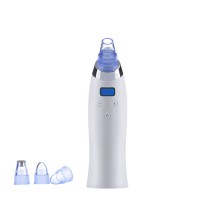-
Phone
+86- 111****
-
Address
Boluo county dragon Lotus Lake Village Town Industrial Park, China
-
E-mail
LatestProducts
What problems should be avoided during the operation of disc brushes
If the disc polishing brush in your hand encounters the following three situations, then you need to be vigilant.
Low brush wire density. Some individual brush manufacturers, in order to save on the cost of using wire for disc polishing brushes, have fewer bristles per hole or insufficient brush hole density, resulting in sparse overall bristles on the brush rollers, soft and weak bristle surfaces, and low efficiency during grinding. Users are not aware of this. Therefore, increasing back pressure or rotational speed to increase efficiency can cause the brush wire to work overload and greatly reduce its lifespan.
Brush silk and plant hair slanted. When pressing the U-shaped metal strip, special attention should be paid to whether the brush wire is smooth. If there is a cross tilt, the resistance of the reverse brush wire during the operation of the brush roller will increase significantly, which is easy to break the wire and greatly reduce the lifespan of the disc polishing brush.
The brushing and trimming are too long. When the length of the brush wire is too long, it is not the cutting surface of the brush wire that is working, but the side of the brush wire that is working. More importantly, the amplitude (angle) of swing of each wire increases significantly. At a speed of 800-2500 rpm, the stress and fatigue coefficient of the brush wire base increase exponentially, causing the abrasive brush wire to break and the disc polishing brush to deform.
As long as any of the above three types of disc polishing brushes appear, it is time to maintain them properly. Otherwise, it may affect the lifespan and use of your brush, and even the quality of work.
Low brush wire density. Some individual brush manufacturers, in order to save on the cost of using wire for disc polishing brushes, have fewer bristles per hole or insufficient brush hole density, resulting in sparse overall bristles on the brush rollers, soft and weak bristle surfaces, and low efficiency during grinding. Users are not aware of this. Therefore, increasing back pressure or rotational speed to increase efficiency can cause the brush wire to work overload and greatly reduce its lifespan.
Brush silk and plant hair slanted. When pressing the U-shaped metal strip, special attention should be paid to whether the brush wire is smooth. If there is a cross tilt, the resistance of the reverse brush wire during the operation of the brush roller will increase significantly, which is easy to break the wire and greatly reduce the lifespan of the disc polishing brush.
The brushing and trimming are too long. When the length of the brush wire is too long, it is not the cutting surface of the brush wire that is working, but the side of the brush wire that is working. More importantly, the amplitude (angle) of swing of each wire increases significantly. At a speed of 800-2500 rpm, the stress and fatigue coefficient of the brush wire base increase exponentially, causing the abrasive brush wire to break and the disc polishing brush to deform.
As long as any of the above three types of disc polishing brushes appear, it is time to maintain them properly. Otherwise, it may affect the lifespan and use of your brush, and even the quality of work.
